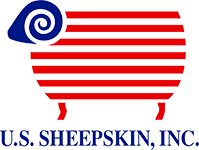Common Terminologies
Seat Cover Terms
Refers to a seat cover that is imported.
Refers to a seat cover that has been manufactured domestically to fit the seat in a specific year make and model of vehicle.
Refers to an all sheepskin seat cover where the seat cover caps over the back rest and around the seat bottom leaving the back of the seat open for map pockets and handles. The leather side of the seat cover is typically lined with a protective cotton blend lining.
Refers to a sheepskin seat cover with a man made backing such as woven acrylic and skirt and is typically lined with a protective cotton blend lining.
Refers to products that have been designed to fit a large variety of applications in any one category.
Refers to a sheepskin seat cover with a stretch textile backing such as woven acrylic or wool, that covers the back and skirt of the seat cover. This seat cover is commonly available in 2 sizes, low back and high back. Same as a Universal-fit.
Refers to a sheepskin seat cover that is made from the remnants left over from making other seat covers. Typically, they are cut into uniformed shapes and sewn together. Then a stretch textile backing such as woven acrylic or wool, is added to the back and skirt of the seat cover
Refers to a vehicle seat that has an adjustable headrest. Please note that many vehicles prior to 1970 were not required to have adjustable headrests and therefore may not have an adjustable headrest.
Refers to a seat that has the headrest molded into the top of the back rest.
Refers to a bench seat that has been divided where one section moves independently of the other.
Refers to a man made textile where acrylic fibers have been stitched into a stretch net material to simulate the look of sheepskin.
Tanning Terms
Refers to a method of preserving the leather.
Refers to a tanning process that used vegetable extracts such as tan liquors from bark extracts to preserve the leather.
Refers to the state-of-the-art tanning process used for sheepskin seat covers.
Refers to a popular tanning process used for medical grade sheepskin. The tanning process is dye free and can be washed without any degeneration to the skin.
General Terms
Refers to the breed of sheep that is typically used for the production of sheepskin products.
Refers to the length of the wool fiber on the sheepskin.
Refers to the natural wave in a wool fiber that offers strength and resiliency to a sheepskin product.
Refers to the number of wool fibers per square inch on a sheepskin pelt. Density requirements differ depending on the products being made.
Refers to a high grade of sheepskin pelt commonly used for garments where the leather side is clear with out blemishes.
Refers to a high grade lamb skin pelt commonly used in garments. It is light weight, extremely pliable and rich in feel.
Refers to a natural form sheepskin or lambskin pelt that has not been shorn and therefore has a wool length that can range from 2 inches to 4 inches.
